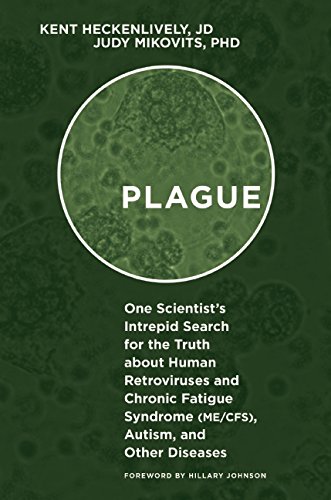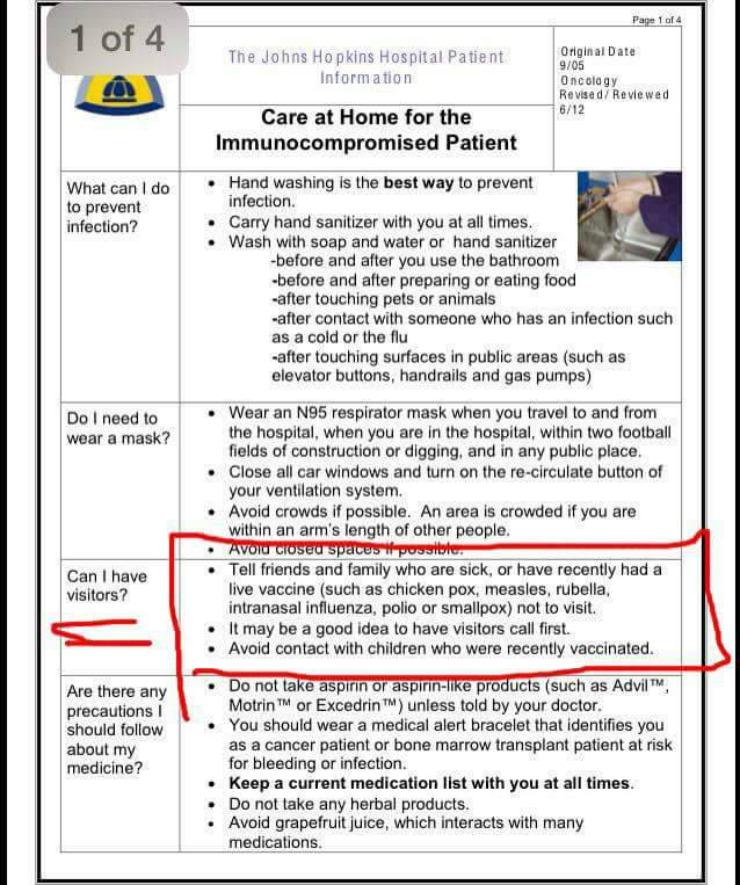The CDC's own research has found that the long denied vaccine-SIDS link is real.
If you believe the official pronouncements of top governmental health agencies like the CDC and FDA, all the vaccines in the present day schedule are a priori safe and effective.
Not only are you told that they can't harm you, but that not taking them can kill you.
Parents are under even more pressure. They are told that refraining from vaccinating their infants or children will greatly increase their risk of dying or being disabled. Worse, they are increasingly labeled as 'crazy' and 'irresponsible' anti-vaccine zealots who are putting the lives of others in danger.
But what happens when the actual evidence from the scientific and clinical literature produced by these very agencies contradicts their own vaccine policies?
This is exactly what has happened with the publication of a new study in the Journal of Pediatrics titled ,"Adverse Events following Haemophilus influenzae Type b Vaccines in the Vaccine Adverse Event ReportingSystem, 1990-2013," wherein CDC and FDA researchers identify 749 deaths linked to the administration of the Hib vaccine, 51% of which were sudden infant death linked to the administration of Hib vaccine.
The CDC has boldly denied that there is any evidence supporting a causal link between vaccines and infant death, despite the fact that their own webpage on the topic acknowledges that "From 2 to 4 months old, babies begin their primary course of vaccinations. This is also the peak age for sudden infant death syndrome (SIDS)." Written off as coincidence, the CDC suggests that stomach sleeping is the primary modifiable risk factor.
Because SIDS is the 3rd leading cause of death in infants, and because the U.S. has one of the highest infant mortality rates in the developed world, one would think that more progress would have been made toward understanding its causes. Perhaps, as explored in this past article, the signal of harm is being ignored. Neglect and suppression of available data has recently been exposed with the confession of a top CDC vaccine scientist who was compelled to covered up data revealing an autism-MMR link in African-American boys.
In the new study, the CDC and FDA researchers themselves acknowledge "the scarcity" of postlicensure safety data on HiB vaccines in today's vaccination schedule. They evaluated reports involving the currently licensed Hib vaccines received from January 1, 1990, through December 1, 2013 available on the Vaccine Adverse Event Reporting System (VAERS).
Presently, the CDC recommends 4 doses of the HiB vaccine at the following ages: 2 months, 4 months, 6 months, 12 months through 15 months.
The HiB vaccine is described on the CDC website as "very safe" and "effective" at preventing HiB disease, which it states can be deadly. They list "most common side effects as usually mild and last 2 or 3 days," including "redness, swelling, and warmth where the child got the shot" and "fever". Nowhere is there listed death or disability as a possible side effect.
In stark contrast to these statements the study uncovered the following highly concerning results:
CDC's Own Data: Vaccine-Infant Death Link
VAERS received 29,747 reports after Hib vaccines; 5179 (17%) were serious, including 896 reports of deaths. Median age was 6 months (range 0-10.22 months). Sudden infant death syndrome was the stated cause of death in 384 (51%) of 749 death reports with autopsy/death certificate records. The most common nondeath serious AE categories were neurologic (80; 37%), other noninfectious (46; 22%) (comprising mainly constitutional signs and symptoms); and gastrointestinal (39; 18%) conditions. No new safety concerns were identified after clinical review of reports of AEs that exceeded the data mining statistical threshold.
Consider also that VAERS is a passive surveillance system, which suffers from profound underreporting. According to the VAERS site's own disclaimer:
"Underreporting" is one of the main limitations of passive surveillance systems, including VAERS. The term, underreporting refers to the fact that VAERS receives reports for only a small fraction of actual adverse events. The degree of underreporting varies widely. As an example, a great many of the millions of vaccinations administered each year by injection cause soreness, but relatively few of these episodes lead to a VAERS report.
According to Barbara Loe Fisher, founder of the National Vaccination Information Center, underreporting may result in overlooking 99% or higher of all vaccine associated injuries:
"Former FDA Commissioner David Kessler estimated in a 1993 article in the Journal of the American Medical Association that fewer than 1 percent of all doctors report injuries and deaths following the administration of prescription drugs. This estimate may be even lower for vaccines. In one survey that our organization conducted in New York in 1994, only 1 doctor in 40 reported to VAERS."
Considering the influence of underreporting, these deaths represent only the tip of the iceberg of vaccine-induced infant morbidity and mortality caused by HiB vaccines. The study also mentioned an earlier analysis which found that infant death is the most common cause of death reported by all vaccine linked reports on VAERS, "accounting for almost one-half of all deaths reported."
Obviously, this is an appalling study. The death of even 1 child for a potentially ineffective medical intervention designed to prevent a rarely fatal illness is a tragedy. Nor can any single vaccine be proven to have prevented any single case of disease because the clinical outcome (end point) is a non-event. This is not the case, however, for vaccine side effects which can be linked directly to the vaccination event with plausible scientific mechanisms.
What is perhaps most astounding is the researcher's conclusion:
"Review of VAERS reports did not identify any new or unexpected safety concerns for Hib vaccines."
This callous disregard for the evidence -- evidence that clearly shows the CDC misrepresents the safety of the HiB vaccine -- speaks to the blind investment in vaccine policy decisions over human wellbeing. Millions of parents have listened to the CDC and FDA and believed that these vaccines not only work but are safe. Informed consent requires those undergoing a quasi-mandatory medical intervention like vaccination to know the true risks associated with it. Failing to do so is clearly a violation of this medical ethical protection against being abused, and in some cases disabled and even killed.
Sayer Ji is the founder of GreenMedInfo.com, an author, educator, Steering Committee Member of the Global GMO Free Coalition (GGFC), and an advisory board member of the National Health Federation.
He founded Greenmedinfo.com in 2008 in order to provide the world an open access, evidence-based resource supporting natural and integrative modalities. It is widely recognized as the most widely referenced health resource of its kind.
Google Plus Profile.
Disclaimer: This article is not intended to provide medical advice, diagnosis or treatment. Views expressed here do not necessarily reflect those of GreenMedInfo or its staff.
http://www.greenmedinfo.com/blog/cdcs-own-data-vaccine-infant-death-link?page=2



 Judy Mikovits, PhD earned her BA from University of Virginia and PhD in biochemistry and molecular biology from George Washington University. In her 35 year quest to understand and treat chronic diseases, she has studied immunology, natural products chemistry, epigenetics, virology, and drug development. In 20 years, she rose from lab tech to director of the lab of Antiviral Drug Mechanisms at the National Cancer Institute before leaving to direct the Cancer Biology program at EpiGenX Pharmaceuticals in Santa Barbara, CA. She became attracted to the plight of patients with chronic fatigue syndrome (ME/CFS) and autism and is primarily responsible for demonstrating the relationship between immune based inflammation and these diseases. She has published over 50 scientific papers. View the
Judy Mikovits, PhD earned her BA from University of Virginia and PhD in biochemistry and molecular biology from George Washington University. In her 35 year quest to understand and treat chronic diseases, she has studied immunology, natural products chemistry, epigenetics, virology, and drug development. In 20 years, she rose from lab tech to director of the lab of Antiviral Drug Mechanisms at the National Cancer Institute before leaving to direct the Cancer Biology program at EpiGenX Pharmaceuticals in Santa Barbara, CA. She became attracted to the plight of patients with chronic fatigue syndrome (ME/CFS) and autism and is primarily responsible for demonstrating the relationship between immune based inflammation and these diseases. She has published over 50 scientific papers. View the  Sayer Ji is a Strategic Advisor for Fearless Parent™, our business partner, and dad of two. He founded
Sayer Ji is a Strategic Advisor for Fearless Parent™, our business partner, and dad of two. He founded  †
†




